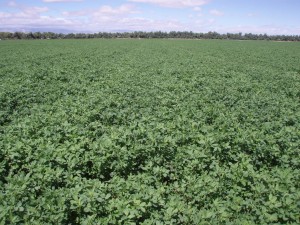All too often, the general public still thinks of farmers as wearing overalls and using very simple practices to grow crops when quite the opposite is true, says Rob Atchley, general manager of citrus groves for Florida and Texas for A. Duda & Sons Inc., LaBelle.
To help bridge that misperception, he called on those in agriculture to do a better job educating the public about current farming practices and how farmers are true professionals.
“Farmers, especially those who grow specialty crops, need to give the public a view of how we really farm, to show these are highly managed businesses and not a couple of guys in overalls with buckets throwing fertilizer,” he says. “They are professional people who do this for a living. They study these businesses. They grow up in these businesses, and they run them at a high level of oversight because the margins demand it. We can’t do things sloppily.”
Do you have a story you’d like to share? Leave us a comment and let us know your story or how you are a professional in the agriculture industry.
To learn more about Toro’s story, visit toro.com. Or, check out one of our many drip irrigation case studies to learn more about how professionals in the agriculture industry are using drip irrigation to improve their farming practices.
To read more about “telling the story”,
Continue reading
 One of our drip irrigation experts recently wrote an article for Progressive Forage Grower magazine about subsurface drip irrigation (SDI) for alfalfa and other field crops. The article introduces the origins and benefits of SDI, compares SDI to other irrigation technologies (such as gravity, sprinkler, and pivot irrigation), and presents recent SDI case studies.
One of our drip irrigation experts recently wrote an article for Progressive Forage Grower magazine about subsurface drip irrigation (SDI) for alfalfa and other field crops. The article introduces the origins and benefits of SDI, compares SDI to other irrigation technologies (such as gravity, sprinkler, and pivot irrigation), and presents recent SDI case studies.
 On Thursday, October 24, 2013 at 1:30PM (Pacific Time), the Grange Network will be hosting a 60-minute, FREE webinar to discuss Chemical / Fertigation designs and demonstrate an easy and convenient online Injector Selector tool. Once you understand how to select the right injector, you’ll learn how to apply the benefits of injector driven Chemigation / Fertigation. The webinar will be led by Angelo L. Mazzei, founder of the Mazzei® company and the patented Mazzei® brand high efficiency Venturi injectors, as well as Celia Cobar, VP, Research & Development.
On Thursday, October 24, 2013 at 1:30PM (Pacific Time), the Grange Network will be hosting a 60-minute, FREE webinar to discuss Chemical / Fertigation designs and demonstrate an easy and convenient online Injector Selector tool. Once you understand how to select the right injector, you’ll learn how to apply the benefits of injector driven Chemigation / Fertigation. The webinar will be led by Angelo L. Mazzei, founder of the Mazzei® company and the patented Mazzei® brand high efficiency Venturi injectors, as well as Celia Cobar, VP, Research & Development.